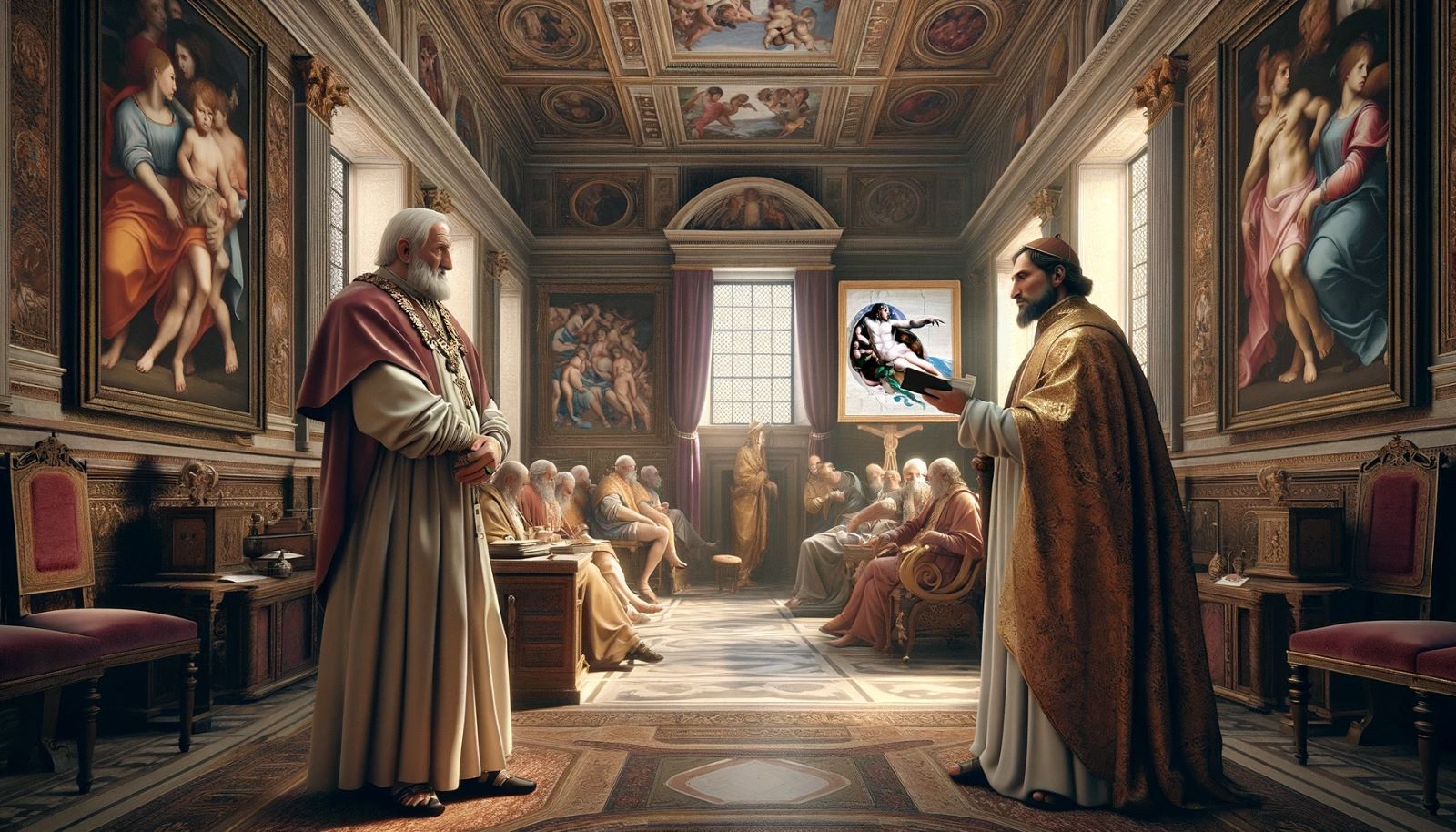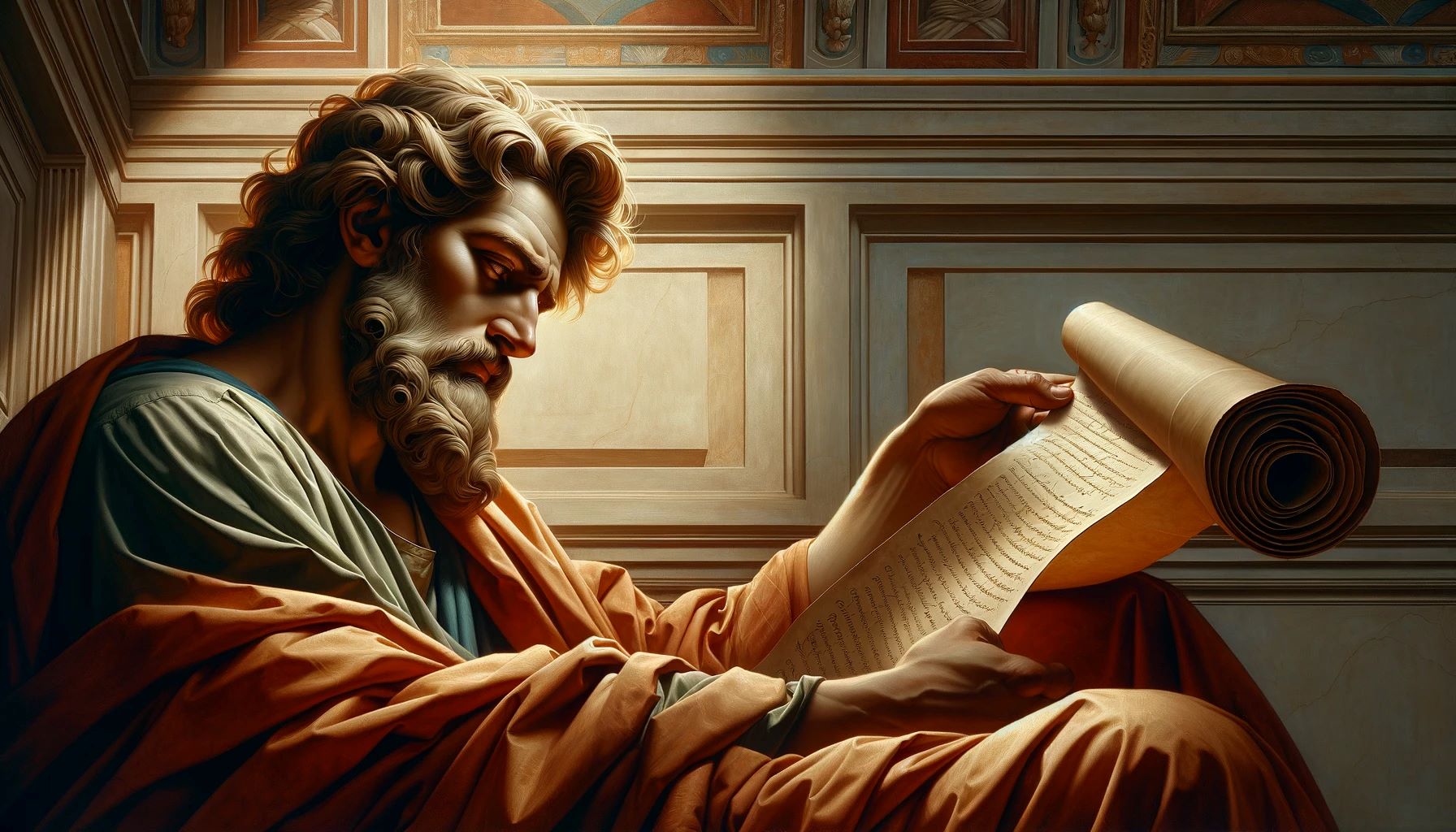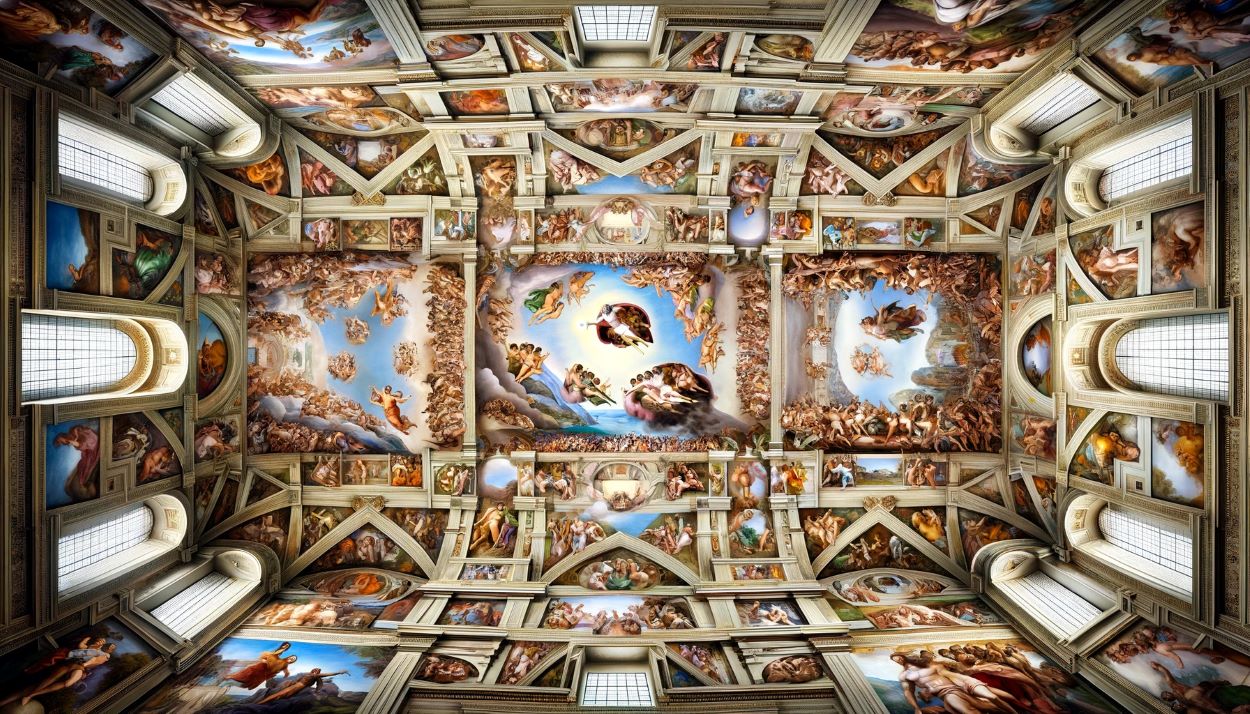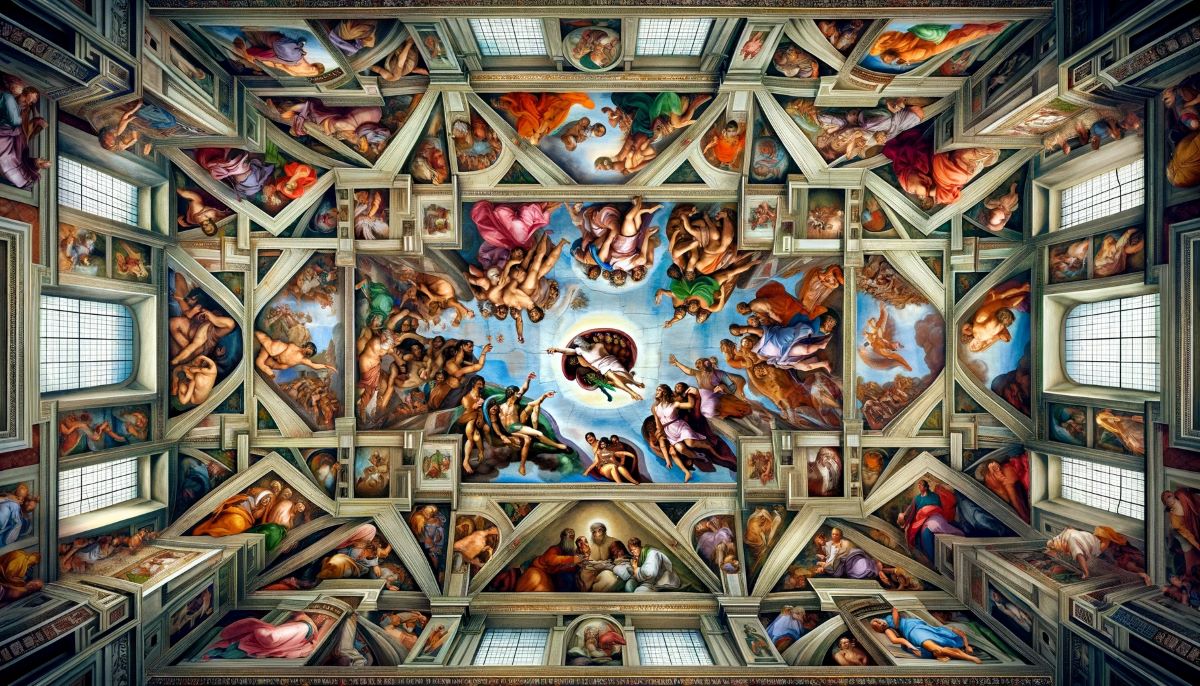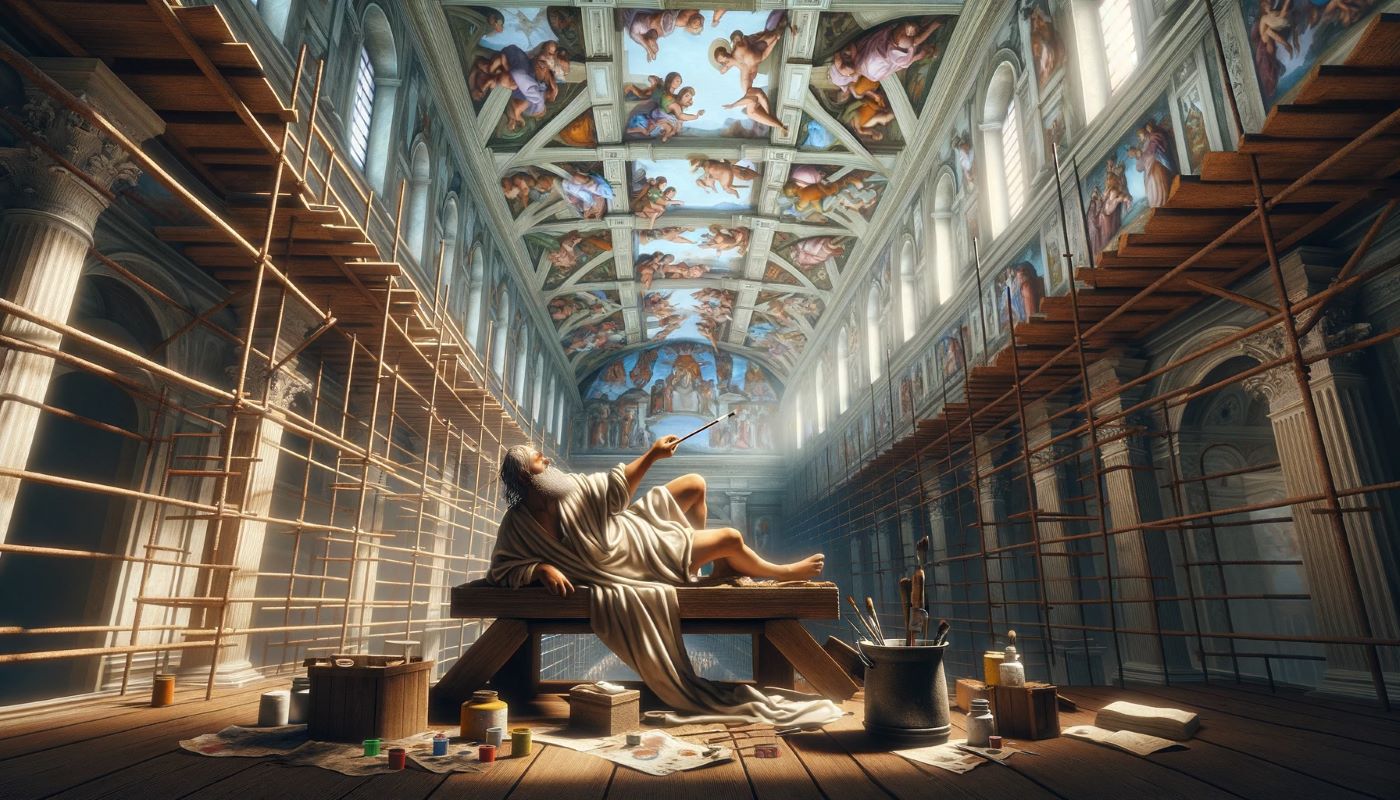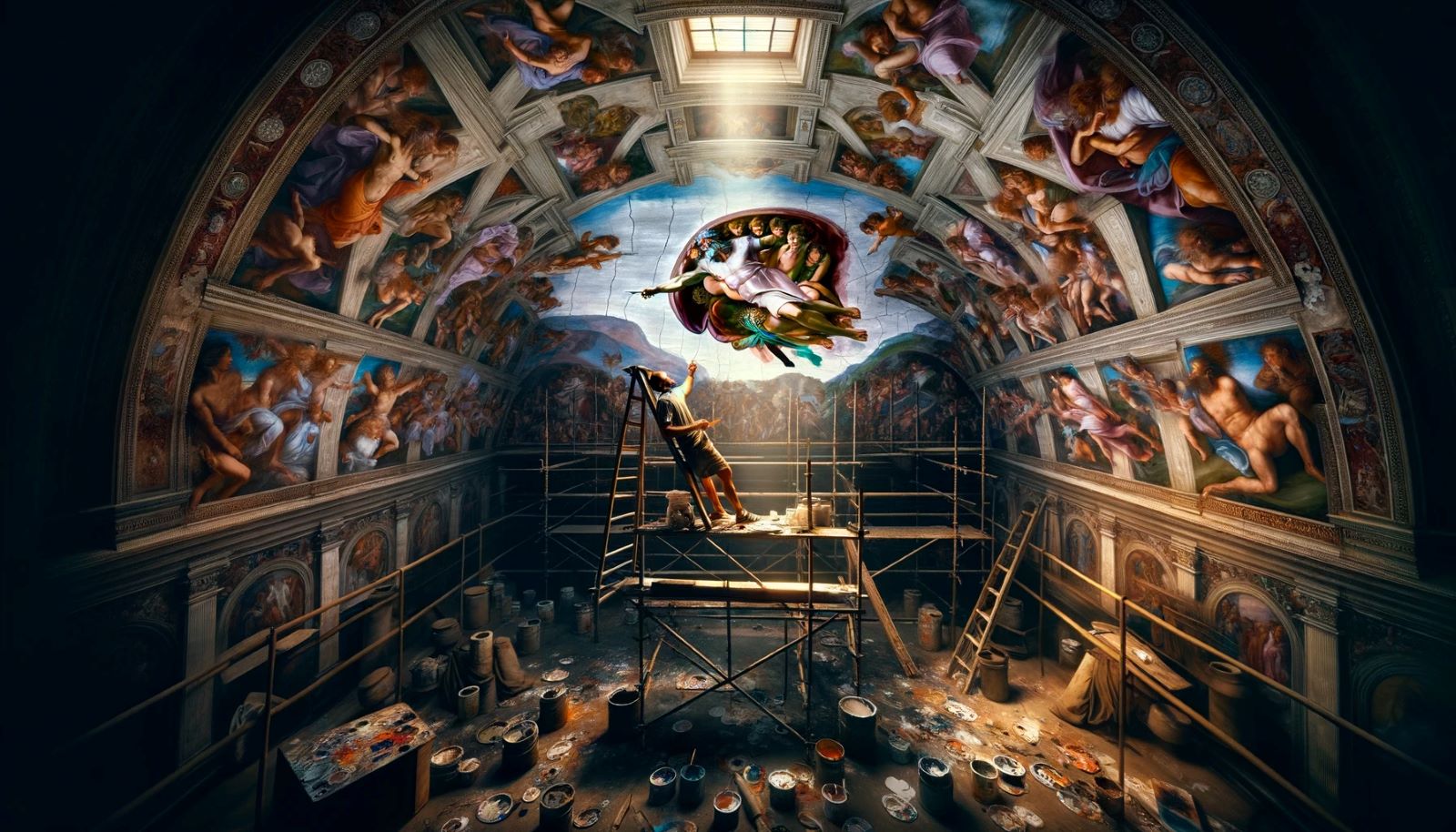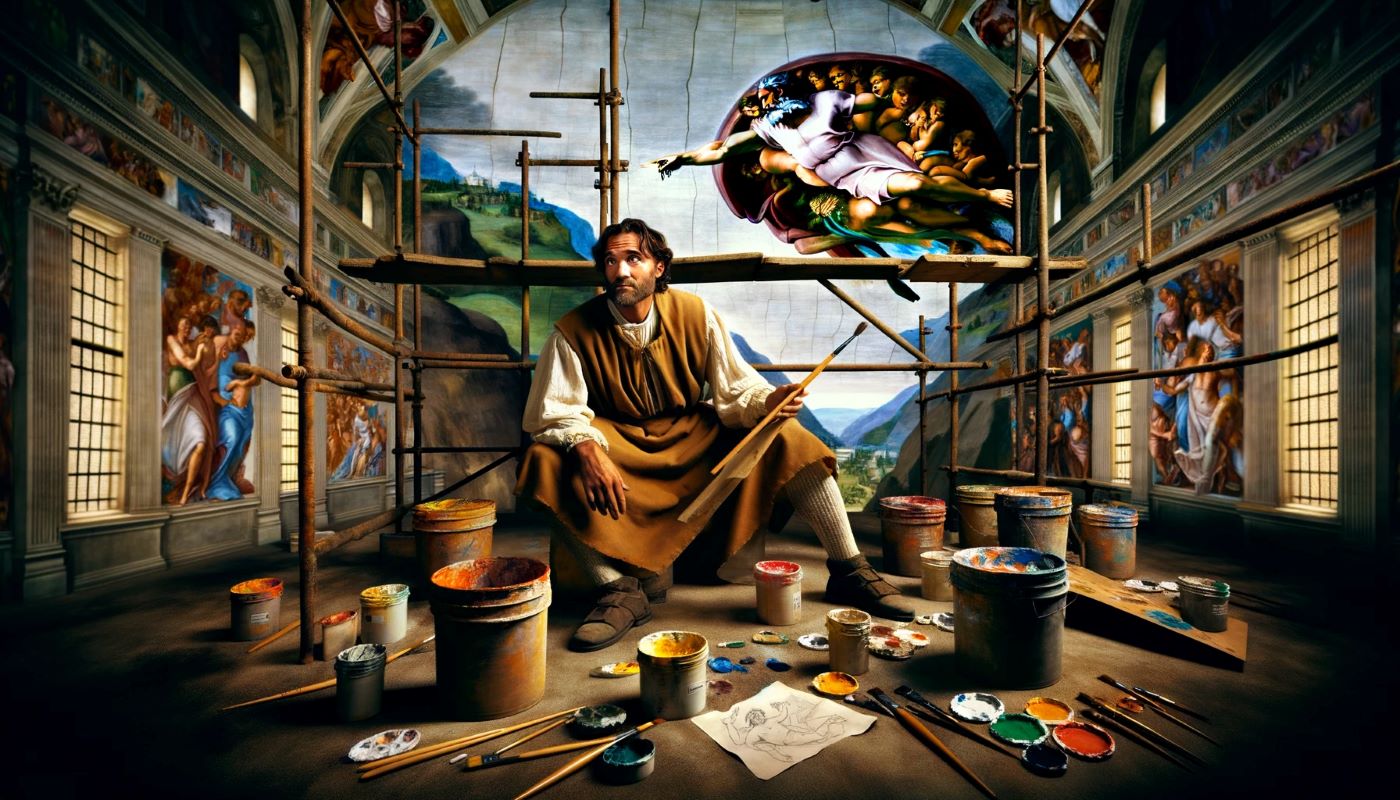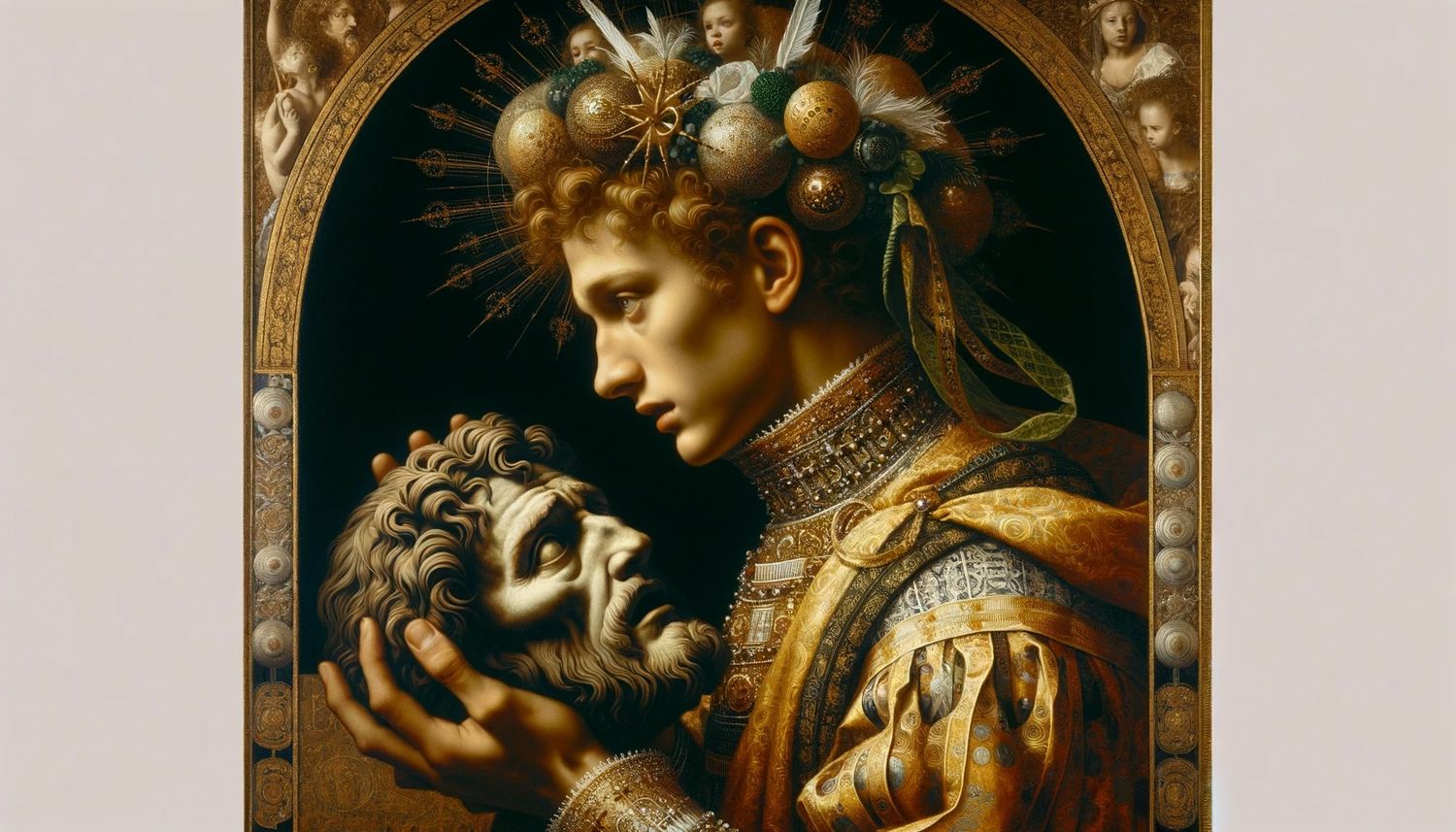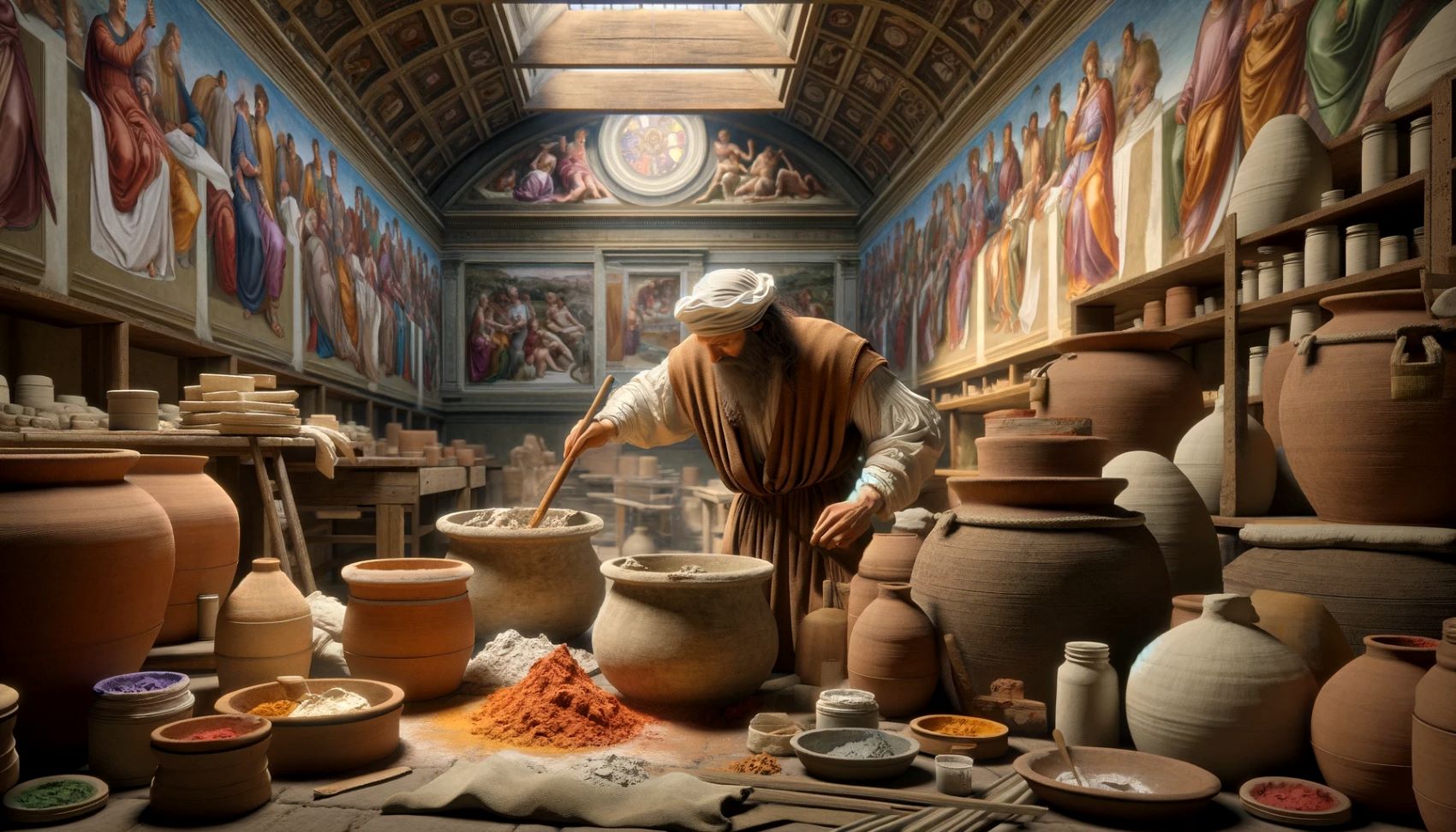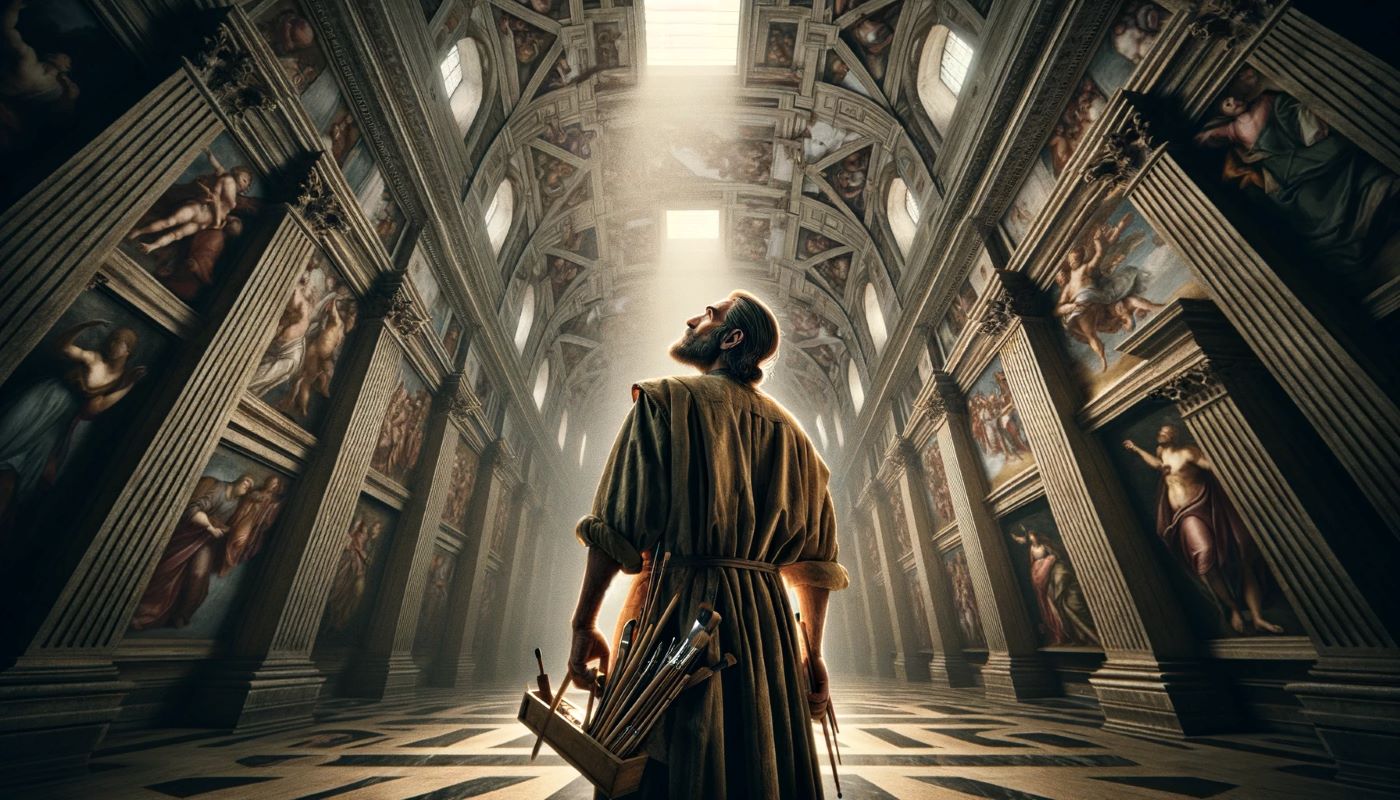Home>Arts and Culture>Who Painted The Arena Chapel


Arts and Culture
Who Painted The Arena Chapel
Published: March 4, 2024
Ericka Andersen, an editor at Christian.net, expertly merges digital strategy with content creation, focusing on faith and societal issues. Her communication skills enhance the platform's engaging narratives, fostering meaningful dialogue on belief's impact on society.
Discover the artist behind the iconic Arena Chapel frescoes and explore the rich history of art and culture in this masterpiece. Uncover the genius behind the renowned artwork.
(Many of the links in this article redirect to a specific reviewed product. Your purchase of these products through affiliate links helps to generate commission for Christian.net, at no extra cost. Learn more)
Table of Contents
Introduction
Who painted the Arena Chapel? This question has intrigued art historians and enthusiasts for centuries. The renowned Arena Chapel, also known as the Scrovegni Chapel, is adorned with breathtaking frescoes that depict scenes from the lives of the Virgin Mary and Jesus Christ. The artist behind these masterpieces is none other than the celebrated Italian painter Giotto di Bondone. In this article, we will delve into the life of Giotto, his early works, the commission of the Arena Chapel, the iconography within the chapel, and the lasting legacy and influence of this remarkable artist. Join us on a journey through time as we explore the captivating story of Giotto and his magnum opus, the Arena Chapel.
Read more: Who Painted The Scrovegni Chapel
The Life of Giotto di Bondone
Giotto di Bondone, often referred to simply as Giotto, was born in 1266 in the town of Vespignano, near Florence, Italy. Little is known about his early life, but it is believed that he received his initial artistic training in Florence, under the guidance of the renowned painter Cimabue. Giotto's talent and passion for art quickly became evident, and he soon gained recognition for his exceptional skills.
Giotto's artistic journey took him to various cities in Italy, where he honed his craft and left an indelible mark on the world of art. His innovative approach to painting and his ability to infuse his works with emotion and depth set him apart from his contemporaries. Giotto's contributions to the art world would ultimately earn him the title of the "father of the Renaissance."
In addition to his artistic prowess, Giotto was also known for his strong sense of individuality and independence. His willingness to break away from traditional artistic conventions and explore new techniques and styles paved the way for future generations of artists. Giotto's legacy as a trailblazer and visionary continues to inspire and captivate art enthusiasts around the globe.
Giotto's impact extended beyond the realm of art, as he was also revered for his role as an architect and sculptor. His multifaceted talents and unwavering dedication to his craft solidified his status as a true Renaissance man. Giotto's influence on the art world remains profound, and his legacy endures as a testament to the power of creativity and innovation.
Giotto's Early Works
Giotto's early works served as a testament to his burgeoning talent and artistic vision. One of his earliest known commissions was the decoration of the famous Basilica of Saint Francis of Assisi in Italy. The frescoes adorning the basilica's walls and ceilings showcased Giotto's ability to breathe life into his subjects, infusing them with emotion and realism. His innovative use of perspective and his keen attention to detail set a new standard for artistic expression.
Another notable early work by Giotto is the series of frescoes in the Church of Santa Croce in Florence. These masterful creations depicted scenes from the lives of Saint Francis and Saint John the Evangelist, further solidifying Giotto's reputation as a visionary artist. His ability to convey complex narratives through his art and evoke genuine human emotions endeared him to patrons and art enthusiasts alike.
Giotto's early works not only demonstrated his technical skill but also hinted at the revolutionary changes he would bring to the world of art. His departure from the stylized and rigid forms of the Byzantine tradition marked a significant shift in artistic expression. Giotto's emphasis on naturalism and his portrayal of human figures with depth and individuality laid the groundwork for the Renaissance art movement that would follow.
As Giotto's reputation continued to grow, so did the demand for his work. His early masterpieces served as a prelude to the monumental undertaking that would solidify his place in art history: the commission of the Arena Chapel.
The Commission of the Arena Chapel
The commission of the Arena Chapel, also known as the Scrovegni Chapel, marked a pivotal moment in Giotto's career and in the history of art. The chapel, located in Padua, Italy, was commissioned by Enrico Scrovegni, a wealthy banker, as a means of atonement for his father's usurious practices. Enrico sought to create a place of worship that would also serve as a lasting tribute to the Virgin Mary, to whom he had a deep devotion. The ambitious project called for the decoration of the chapel's interior with a series of frescoes that would depict the lives of the Virgin Mary and Jesus Christ, as well as scenes from the Old and New Testaments.
Giotto's appointment as the master artist for the chapel's decoration was a testament to his growing reputation and his unparalleled skill in capturing the essence of human emotion and spirituality. The commission presented Giotto with an opportunity to showcase his artistic prowess on a grand scale and to leave an enduring legacy that would transcend generations. The scope and significance of the project underscored the level of trust and admiration that Enrico Scrovegni had for Giotto's abilities as an artist.
The frescoes within the Arena Chapel, executed by Giotto and his workshop, are a testament to the artist's unparalleled talent and his ability to infuse his creations with profound meaning and beauty. The scenes depicted within the chapel's walls transport visitors to a world of spiritual contemplation and artistic splendor. Giotto's masterful use of color, composition, and perspective creates a sense of depth and realism that continues to captivate viewers to this day.
The commission of the Arena Chapel not only solidified Giotto's reputation as a preeminent artist but also set a new standard for the integration of art and spirituality. The chapel's interior, adorned with Giotto's timeless frescoes, stands as a testament to the enduring power of artistic expression and its ability to inspire and uplift the human spirit. The commission of the Arena Chapel remains a defining moment in the history of art, showcasing Giotto's unparalleled talent and his unwavering commitment to creating works of transcendent beauty and significance.
The Iconography of the Arena Chapel
The iconography of the Arena Chapel is a rich tapestry of religious symbolism and narrative imagery that reflects the profound spiritual and theological themes of the Christian faith. Giotto's masterful use of iconography within the chapel's frescoes serves as a visual testament to the life, death, and resurrection of Jesus Christ, as well as the life of the Virgin Mary. Each scene depicted within the chapel's walls is imbued with layers of meaning and significance, inviting viewers to contemplate the timeless messages conveyed through Giotto's artistry.
1. The Life of the Virgin Mary
The frescoes dedicated to the life of the Virgin Mary within the Arena Chapel offer a poignant portrayal of her journey, from her birth and childhood to her role as the mother of Jesus. Giotto's depiction of the Annunciation, the Nativity, and other key moments in Mary's life captures the essence of her divine calling and her unwavering faith. The iconography of these scenes serves as a visual meditation on the sacred nature of Mary's role in the Christian narrative.
2. The Life of Christ
Central to the iconography of the Arena Chapel are the scenes depicting the life of Christ, including his miracles, teachings, crucifixion, and resurrection. Giotto's masterful portrayal of these pivotal events in Christian theology conveys a sense of profound reverence and emotional depth. The iconography within these frescoes invites viewers to contemplate the transformative power of Christ's life and the enduring impact of his teachings.
3. The Last Judgment
One of the most striking elements of the iconography within the Arena Chapel is the depiction of the Last Judgment. Giotto's portrayal of this apocalyptic event, with its vivid imagery of heaven, hell, and the righteous and the damned, serves as a powerful reminder of the consequences of human actions and the ultimate triumph of divine justice. The iconography of the Last Judgment within the chapel's walls serves as a sobering yet hopeful reflection on the eternal destiny of the soul.
4. The Virtues and Vices
In addition to the central themes of the life of Mary and Christ, the iconography of the Arena Chapel includes depictions of the virtues and vices, illustrating the moral and ethical dimensions of human existence. Giotto's skillful portrayal of these allegorical figures invites viewers to contemplate the timeless struggle between good and evil and the enduring relevance of moral virtues in the human experience.
Giotto's masterful use of iconography within the Arena Chapel transcends mere artistic representation, serving as a profound visual expression of the core tenets of Christian faith and morality. The iconography of the chapel's frescoes continues to inspire contemplation and spiritual reflection, inviting viewers to engage with the timeless messages conveyed through Giotto's enduring artistic legacy.
Giotto's Legacy and Influence
Giotto's legacy as a pioneering artist and visionary has left an indelible mark on the world of art, shaping the course of artistic expression for centuries to come. His revolutionary approach to painting, characterized by a profound sense of naturalism and emotional depth, set a new standard for artistic innovation and creativity. Giotto's unwavering commitment to infusing his works with genuine human emotion and spiritual significance redefined the possibilities of visual storytelling, inspiring generations of artists to follow in his footsteps.
The influence of Giotto's artistic legacy extended far beyond the confines of his own time, permeating the Renaissance and beyond. His groundbreaking contributions to the portrayal of human figures with depth, individuality, and emotion laid the foundation for the artistic principles that would come to define the Renaissance movement. Giotto's emphasis on capturing the human experience with unparalleled realism and sensitivity revolutionized the way artists approached their craft, ushering in a new era of artistic exploration and expression.
Giotto's innovative use of perspective and composition further solidified his status as a trailblazer in the art world, paving the way for the development of new techniques and styles that would shape the course of art history. His ability to imbue his works with a sense of narrative drama and psychological depth set a new standard for the power of visual storytelling, inspiring artists to explore the boundless potential of artistic expression.
The enduring impact of Giotto's legacy is evident in the countless artists who have drawn inspiration from his work, seeking to capture the same sense of humanity and spiritual resonance that permeates his creations. From the towering figures of the Renaissance, such as Michelangelo and Raphael, to artists of subsequent movements, Giotto's influence continues to resonate across the centuries, serving as a timeless source of artistic inspiration and creative exploration.
Giotto's legacy and influence extend beyond the realm of art, encompassing a broader cultural and historical significance. His role as a visionary artist and innovator continues to captivate the imagination of art enthusiasts and scholars, offering a window into the transformative power of creativity and the enduring resonance of artistic expression. Giotto's legacy stands as a testament to the enduring impact of artistic vision and the timeless relevance of his contributions to the world of art and culture.
